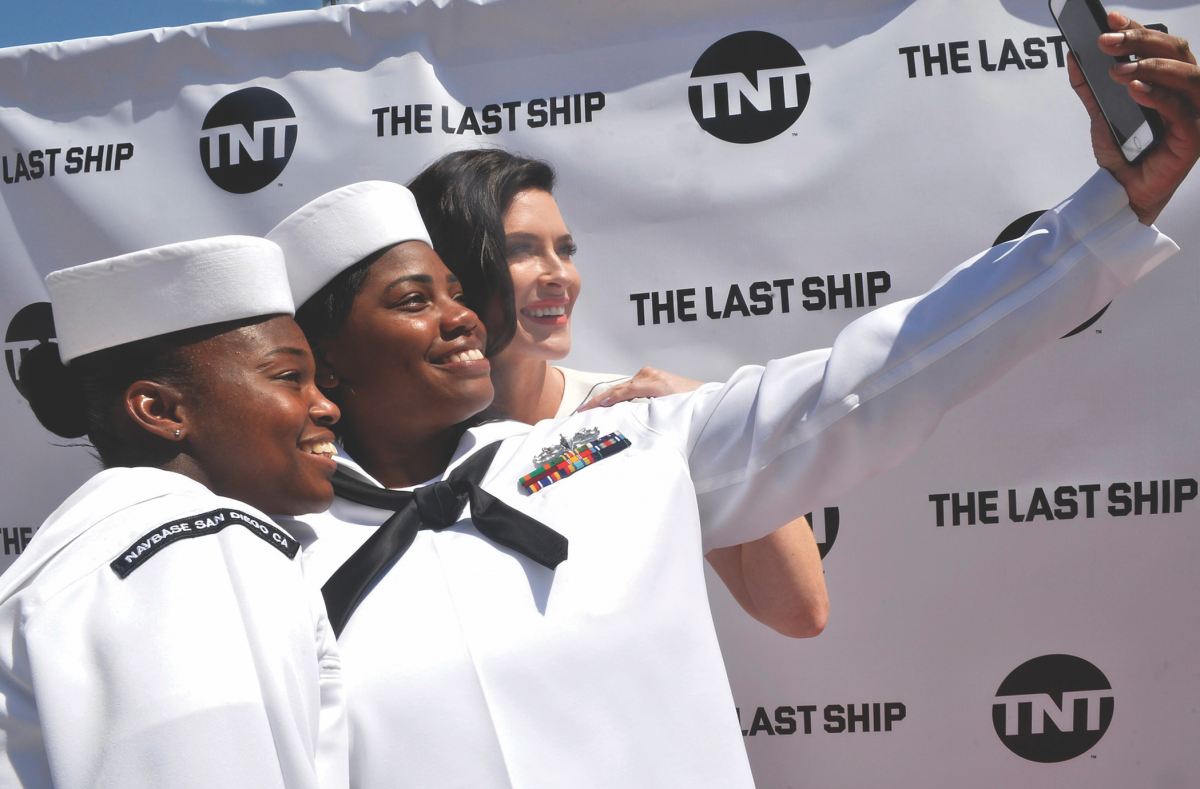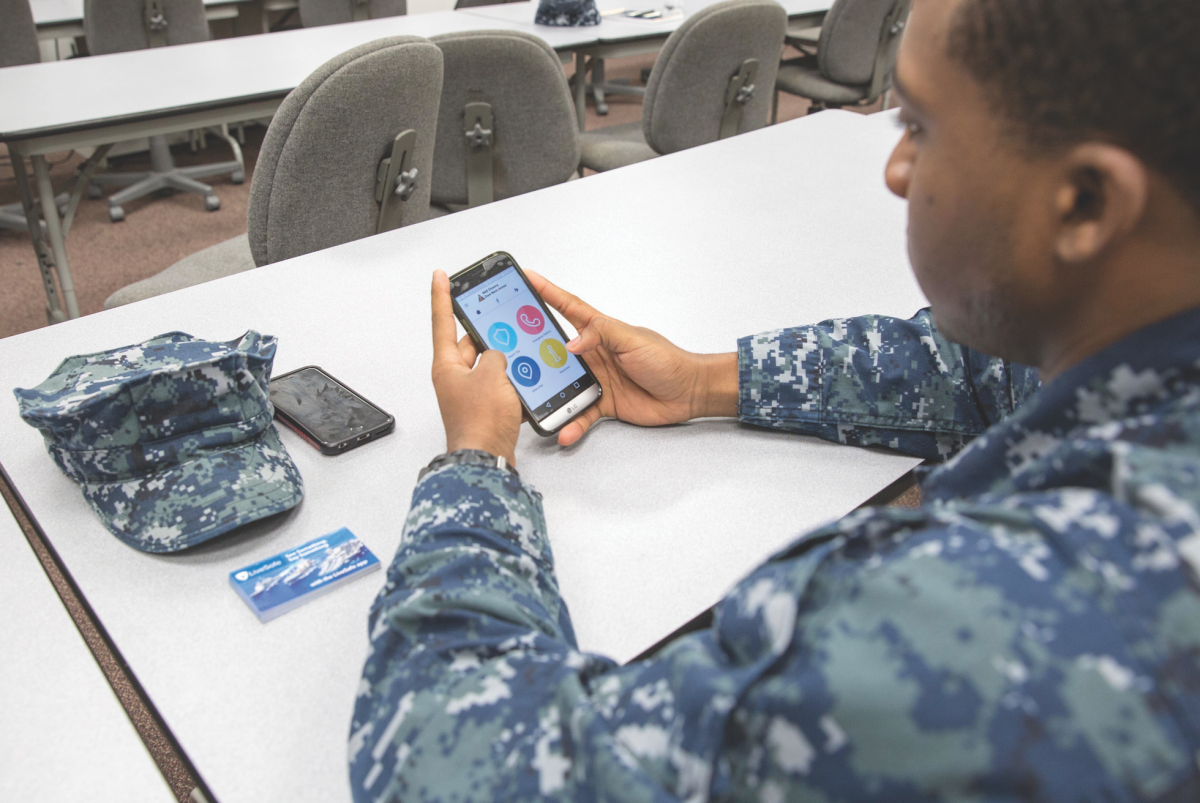
Millennials have been the fascination of many books, articles, and studies on leadership for the past decade. The same level of attention has yet to be paid to the post-millennial generation, or iGen. Significant competitive advantage exists in being at the forefront of understanding this new generation before these individuals enter the workforce. iGen quickly has become the largest cohort in the U.S. population and soon will leave adolescence. The majority of the U.S. military is between the ages of 17 and 25, which rapidly will be populated by members of iGen. Military leaders must understand the factors that have shaped members of this new generation so they can develop a lens through which to lead them.
Understanding iGen
Jason Dorsey from the Center for Generational Kinetics is an active researcher of both the millennial generation and iGen.1 Dorsey contends that generations are defined by trends rather than specific years. As such, the defining historical event of the millennial generation was the terrorist attacks of 11 September 2001. Anyone born after 1996—those who have little recollection of the events on 9-11—falls into iGen.2 This generation’s defining experiences are the economic collapse of 2008 and being born into the era of the smartphone and social media.
Unlike millennials, iGen did not experience the economic recession of 2008 on a professional level; rather they were keen observers watching the millennials struggle with wage stagnation, college debt, and career instability. Similar to their great-grandparents, who spent their youth during the Great Depression, iGen experienced the economic stresses during their early years, and it has changed the way they view handling money and their professional careers.
iGen is obsessed with preventing future debt—college and otherwise—by saving money at an early age. More than 12 percent of iGen members have started saving for retirement, and 35 percent plan on starting by their mid-20s.3 Compare this to millennials, of whom 61 percent have less than $1,000 in savings.4 This conscious effort to conserve money is further demonstrated by a survey by TD Ameritrade in which members of iGen were given a hypothetical $500 to do with whatever they liked. Forty-seven percent said they would save for nothing in particular, while 34 percent said they would save it for college. That adds up to 84 percent of participants saving the $500 versus spending it, evidence of the same practicality toward money exercised by those who grew up during the Great Depression. 5

The Marine Corps social media campaign that showcased the Ali bothers—twins who overcame great obstacles to become both Marines and lawyers—is a good example of how the U.S. military can recruit iGen members.
Practical use of money is not the only consequence of the Great Recession on iGen. Recent studies done by Adecco—a job-finding website and Fortune 500 company—show that more than 70 percent of iGen would prefer jobs that offer security rather than ones that fulfill their passion. Members of iGen want to work for organizations that are going to develop them professionally and provide lucrative and long-term career paths. Understanding this desire is useful when attempting to attract and retain members of iGen in the military.
Studies show that iGen members—who are virtuosos on their smartphones—spend anywhere from two to ten hours per week on social media. A negative consequence of this connection is that iGen spends more time at home, on the couch than previous generations. iGen members go out less and work less—by more than 20 percent—during their teenage years.6 One in four iGen teenagers lacks a driver’s license when he or she finishes high school. They spend less time on homework during teenage years than before the 1990s, while time spent in front of a screen using social media has skyrocketed.
Increased use of social media with smartphones has had an alarming impact on the psychology of iGen. More than 42 percent of iGen members feel that social media has a direct impact on their self-esteem as well as how others judge them, a number twice as large as baby boomers and 10 percent more than millennials.7 The National Institute on Drug Abuse runs a study each year that asks 12th graders to rate their happiness as well as how they spend their leisure time. The study found that those who spend more time on screen activities are more likely to be unhappy than average. In addition, teens who spend three hours or more per day on social media are 35 percent more likely to have a risk factor for suicide.8
Social media has caused a growing number of iGen to feel left out, because when members of their generation do happen to go out, they share it relentlessly on every social media platform available. This over-sharing can cause security risks to an individual and his or her employer. A direct military application is an individual posting pictures in a manner that brings discredit to the service, disgracing a uniform—by improper wearing, or performing indecent acts in uniform—or information regarding a ship’s movements.

Leading iGen
Leaders must adapt their approach to lead iGen without undermining the foundations on which naval leadership values are built. There must still be an application of standards and expectations regardless of generation, but generational awareness can help a leader more effectively lead iGen to embrace and accomplish the mission. Leadership techniques can be tailored to account for iGen’s focus on sustainable careers and to positively shape their social media myopia.
iGen’s more practical approach toward careers can benefit the naval service because a majority among them want their employers to provide them with professional development and clear career paths to success. Military leaders must highlight ways their subordinates can better themselves through professional and technical schools as well as undergraduate and graduate programs. Increasing funding for these programs and pushing their implementation will help retention rates and morale as iGen members will notice that their organization has a vested interest in their development.
Well-defined career paths and benefits of naval service should be marketed vigorously to members of this new generation on the platform they use the most: social media. The Navy should emphasize the benefits of a military career such as retirement, healthcare, and the GI Bill. An effective social media campaign must seem less like a patriotic call to better the country by bettering themselves. The Marine Corps social media campaign that showcased the Ali bothers—twins who overcame great obstacles to become both Marines and lawyers—is a good example.
Leaders must have a heightened awareness of social media’s positive and negative effects on both the unit and the individual. A public affairs program that encourages positive social media activity while mitigating the associated risks is vital. Units must have an appropriate social media presence that continuously posts individual accomplishments as well as non-classified unit events and exercises. Leaders are taught to praise in public and scold in private. Social media posting is the next generation of praising in public and can increase the sense of pride within a unit. Headquarters Marine Corps, for example, showcases its Marine occupational specialties by highlighting on social media important historical dates and large multinational operations.
The services also must develop worthwhile social media training to help mitigate negative consequences associated with its use. The Naval Academy’s social media training uses embarrassing pictures midshipmen have posted of themselves wearing the uniform improperly and highlights the harm this does to both the institution and the individual.
Perhaps the most important part of a public affairs program is comprehensive training on suicide and its direct correlation to increased social media use. As iGen becomes more aware of the effect social media can have on their mental health, it becomes more likely they will seek help when it is needed rather than turning to suicide or substance abuse.
All that said, attempting to create a new standardized formula to lead iGen would fail to capture the nuances associated with how generational factors should be leveraged to create a lens through which timeless leadership approaches can be employed. Leadership cannot be reduced to a compact equation or formula but can add generational awareness to the expanding toolbox all leaders should carry.
In a recent interview with Success magazine, Duke basketball coach Mike Kryzewski perfectly described the balance demanded for good leadership:
The most incredibly interesting thing about a leader is what adjustments you make and how you make them while keeping your core principles alive and well. You have to be willing to learn what’s best and then adjust because every year is different, every team is different. If you believe what you’ve done in the past is the only way to do it with a new group, time will prove you wrong.9
While these time-tested leadership values and traits still ring true today, applying these approaches through an appropriate generational lens can be the difference between success and failure.
1. “Gen Z Research Findings, How-To, and Insights,” GEN HQ.
2. Ibid.
3. Gina Ragusa, “Research Shows How Generation Z Thinks Differently From Millennials When it Comes to Money.” Business Insider, 7 June 2017.
4. Kathleen Elkins, “Here’s How Much Money the Average Millennial Has in Savings,” CNBC, 19 September 2017.
5. Neale Godfrey, “’A Penny Saved,’ Ben Franklin Would Be Proud Of Gen Z,” Forbes, 30 August 2016.
6. Jean M. Twenge, “Have Smartphones Destroyed a Generation?” The Atlantic, September 2017.
7. Jason Dorsey, “Infographic on Gen Z Social Media Trends and Influence,” GEN HQ.
8. Twenge, “Have Smartphones Destroyed a Generation?”
9. Ryan Jenkins, “How the World’s Greatest Coach Influentially Leads Generation Z,” Inc.com.
Second Lieutenant Winnefeld commissioned as a Marine ground officer in May 2018 from the Naval Academy and currently is stationed at The Basic School in Quantico, Virginia.


